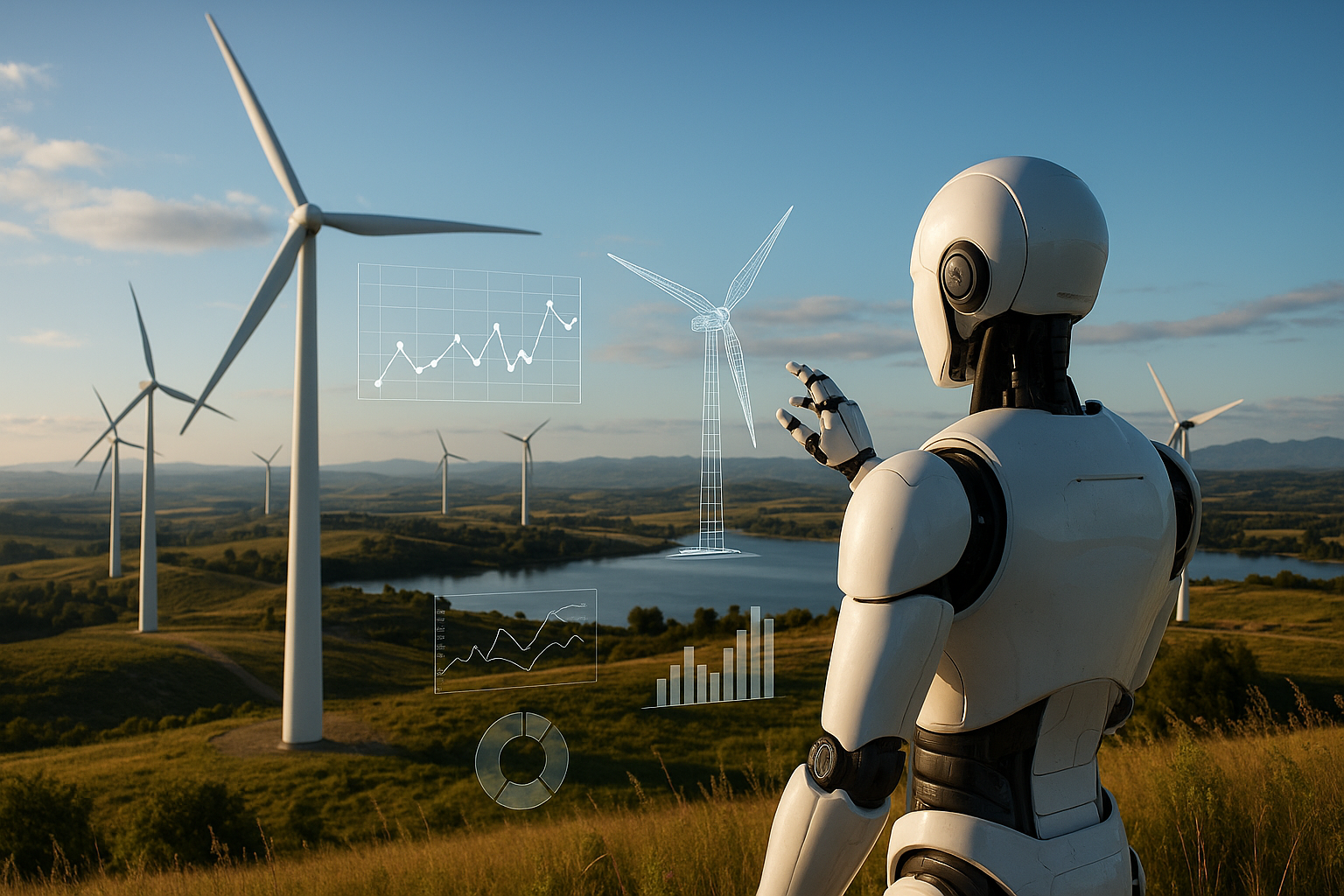From blades to cables: AI boosts efficiency across wind power infrastructure
One of the primary challenges in wind energy development is optimizing the spatial layout of wind turbines within a given site. Poor turbine placement can lead to reduced energy capture due to wake effects and aerodynamic interference. The review highlights how artificial intelligence, particularly evolutionary algorithms like genetic algorithms and particle swarm optimization, has become instrumental in solving complex layout problems.

With climate targets tightening worldwide, wind power is gaining momentum as a critical component of the clean energy transition. A new review published in Wind provides a timely analysis of how artificial intelligence is reshaping the design and optimization of wind power systems.
The study, titled “Review of Artificial Intelligence-Based Design Optimization of Wind Power Systems,” offers a detailed examination of the current landscape and future prospects for AI in this critical domain. The authors explore three major facets of design, wind farm layout, turbine structure, and electrical collection systems, each enhanced through AI applications that allow for better performance and reliability.
How is AI enhancing wind farm layout and siting strategies?
One of the primary challenges in wind energy development is optimizing the spatial layout of wind turbines within a given site. Poor turbine placement can lead to reduced energy capture due to wake effects and aerodynamic interference. The review highlights how artificial intelligence, particularly evolutionary algorithms like genetic algorithms and particle swarm optimization, has become instrumental in solving complex layout problems.
These AI tools enable designers to simulate thousands of layout configurations while accounting for terrain, wind variability, and environmental constraints. By automating this process, AI drastically reduces the time and computational load traditionally associated with manual or semi-empirical layout design. Furthermore, multi-objective optimization techniques now allow developers to simultaneously balance competing goals such as power output, cost minimization, and ecological impact.
In addition to traditional onshore applications, the study also points to the growing importance of AI in planning offshore wind farms, where installation complexity and maintenance logistics add further design constraints. As offshore development continues to expand, intelligent layout algorithms will be indispensable in ensuring the commercial viability of these ventures.
What role does AI play in turbine design optimization?
Wind turbines are highly complex electromechanical systems, and optimizing their components for maximum efficiency remains a major engineering challenge. The paper outlines how AI models are being applied to enhance design parameters including blade shape, rotor diameter, hub height, and materials selection.
Machine learning algorithms are particularly effective at analyzing large datasets of performance metrics and environmental conditions. This allows engineers to develop predictive models that identify optimal design combinations for specific geographic and meteorological contexts. Compared to traditional trial-and-error methods or finite element simulations, AI significantly reduces design cycle times while improving precision.
The review also emphasizes the role of hybrid models that combine neural networks with optimization techniques. These models can handle nonlinearities in turbine dynamics and are adept at learning from both historical data and real-time performance monitoring. As a result, AI is enabling a new generation of adaptive turbine systems that can adjust to changing wind conditions over their operational lifespan.
Beyond structural optimization, AI is also improving the design of control systems that govern turbine behavior. Smart controllers powered by reinforcement learning can now fine-tune pitch and yaw angles in response to fluctuating wind patterns, increasing energy capture and reducing wear on mechanical components.
How is AI transforming wind farm electrical infrastructure?
The efficient transmission of electricity from turbines to the grid is a critical component of wind power systems, and the paper identifies this area as a major beneficiary of AI-driven optimization. Electrical collection systems, including cabling layouts, substation placement, and interconnection planning, require careful design to minimize power loss and ensure stability.
AI techniques are now being used to model electrical behavior under various loading conditions, making it possible to identify optimal routing and hardware configurations. These tools also help prevent system faults and facilitate easier integration with existing grid infrastructure. The ability to dynamically simulate system performance allows for more resilient designs that can adapt to real-time operational demands.
In addition, AI contributes to the planning of hybrid systems where wind farms are integrated with other renewable sources such as solar or energy storage. By coordinating power flows and forecasting generation, AI supports more reliable and dispatchable clean energy systems. The authors suggest that such integrated design approaches will be essential for meeting the increasing complexity of modern power networks.
The review calls for greater transparency in AI models, real-world validation, and regulatory frameworks that support digital innovation in energy infrastructure.
- READ MORE ON:
- AI in wind energy
- wind power system optimization
- artificial intelligence in renewable energy
- smart wind power systems
- renewable energy AI solutions
- how AI improves wind turbine performance
- AI tools for wind turbine structure optimization
- AI in sustainable energy system development
- AI-powered wind energy
- FIRST PUBLISHED IN:
- Devdiscourse










